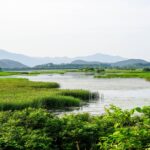Forest fires are becoming more frequent and severe, posing a significant threat to our environment. The harmful impacts of forest fires extend beyond the immediate destruction of forests. They affect air quality, wildlife, and human health, causing long-term damage that is often hard to reverse.
Understanding these impacts is crucial for taking preventive measures. The harmful consequences of forest fires are not limited to environmental damage. They disrupt communities, destroy homes, and put lives at risk. The economic and social costs are immense, making it essential to address this growing problem.
Taking action to reduce the risks of forest fires is vital. Through awareness, prevention, and proper management, we can protect our forests and communities from these devastating events.
What Causes Forest Fires?
Forest fires are often triggered by natural events, such as lightning strikes and prolonged dry conditions. Lightning can easily ignite dry vegetation, leading to uncontrollable wildfires.
Similarly, droughts create the perfect conditions for fires to spread rapidly, turning small sparks into large, destructive blazes. These natural factors play a significant role in the occurrence and intensity of forest fires.
However, human activities are a major cause of forest fires. Negligence, like leaving campfires unattended or discarding burning cigarettes, can start fires that quickly spread.
Deforestation also increases the risk, as it leaves dry, flammable debris behind. When combined with natural factors, these human-induced activities significantly contribute to the forest fires.
The severity of forest fires is often the result of both natural and human causes working together. Dry conditions caused by droughts make forests more vulnerable to fires sparked by lightning or human actions.
Once a fire starts, it can quickly become uncontrollable, leading to widespread damage. Understanding these causes is key to preventing and managing the harmful effects of forest fire.
Forest fires cause significant damage each year, with estimates showing that millions of acres of forest are destroyed annually. This destruction leads to the loss of billions of dollars in property, infrastructure, and natural resources.
The cost of fighting these fires, along with the economic impact on local communities, adds to the immense toll.
Immediate Environmental Impacts of Forest Fires
The immediate environmental impacts of forest fires are devastating, particularly for vegetation and wildlife. As fires rage through forests, they consume trees, plants, and underbrush, leaving behind a barren landscape. This destruction not only wipes out entire ecosystems but also displaces wildlife.
Many animals are unable to escape the fast-moving flames, resulting in significant loss of life. Those that survive may find their habitats destroyed, forcing them to relocate or struggle for survival in a drastically changed environment.
In addition to the loss of vegetation and wildlife, forest fires contribute to severe air pollution. As trees and plants burn, they release large amounts of carbon dioxide (CO2) and other harmful gases into the atmosphere. This sudden spike in CO2 levels exacerbates global warming and contributes to the greenhouse effect.
The smoke from these fires also contains particulate matter, which can travel long distances, affecting air quality far from the fire’s origin. This polluted air poses serious health risks to humans, especially those with respiratory issues.
The destruction of ecosystems and natural habitats is another immediate consequence of forest fires. When an ecosystem is destroyed, the intricate balance of life it supports is disrupted. Species that depend on specific plants or other animals may face extinction if their food sources or habitats are lost.
Furthermore, the soil becomes exposed and vulnerable to erosion, making it difficult for vegetation to regrow. This loss of biodiversity and the breakdown of natural processes can have long-lasting effects on the environment, making recovery slow and challenging.
Also Read: Ecology, Environment, and Conservation Strategies
Long-term Environmental Consequences of Forest Fires
The long-term environmental consequences of forest fires are profound, beginning with soil degradation and loss of fertility. When fires burn through forests, they destroy the top layer of soil, which is rich in nutrients and organic matter.
Without this protective layer, the soil becomes less fertile and less capable of supporting new plant growth. The intense heat from the fire can also lead to the formation of a hard, water-repellent layer, further preventing vegetation from returning.
Water resources and quality are also severely impacted by forest fires. With the vegetation gone, there is nothing to absorb and filter rainwater. This leads to increased runoff, which can carry ash, soil, and other debris into nearby rivers, lakes, and streams.
As a result, water quality declines, affecting both aquatic life and human communities that rely on these water sources. In some cases, the contamination can last for years, making it difficult for ecosystems to recover.
Forest fires also contribute to increased erosion and the potential for desertification. Without trees and plants to anchor the soil, it becomes more prone to being washed or blown away. This erosion not only strips the land of its remaining nutrients but also leads to the loss of large areas of fertile land.
Over time, this can result in desertification, where once-productive land becomes barren and unable to support life. The loss of forests also reduces the land’s ability to retain moisture, further accelerating the desertification process.
These long-term impacts are closely connected to broader environmental concerns like climate change. As forest fires become more frequent and intense, they release large amounts of carbon dioxide into the atmosphere, contributing to global warming.
Additionally, the loss of forests reduces the planet’s ability to absorb CO2, creating a feedback loop that exacerbates climate change. This connection highlights the urgent need for better forest management and climate action to mitigate these devastating effects.
Impact on Human Life and Property
The harmful impacts of forest fires extend far beyond the environment, directly affecting human life and property. When a forest fire strikes, it often leads to the destruction of homes and infrastructure. Entire communities can be wiped out within hours, leaving people homeless and displacing families.
Roads, power lines, and other critical infrastructure are often damaged or destroyed, making recovery efforts even more challenging. The loss of property and personal belongings is devastating, and rebuilding takes years, if not decades.
Health risks from forest fires are another serious concern. The smoke produced by these fires contains harmful particles and toxic gases that can be inhaled by those living nearby.
Prolonged exposure to this polluted air can lead to respiratory issues, especially for vulnerable groups like children, the elderly, and those with pre-existing conditions. The deterioration of air quality also affects people far from the fire’s origin, as winds can carry smoke over large distances, impacting air quality in urban areas.
The economic impact of forest fires is significant, particularly for local communities. Many people lose their livelihoods, especially those working in agriculture, forestry, and tourism. Businesses are forced to close, and jobs are lost, leading to financial instability.
The cost of rebuilding and recovery adds a heavy burden on local economies, often requiring government aid and international assistance. In the long run, the economic damage from forest fires can hinder development and reduce the quality of life for those affected.
Effects on Wildlife and Biodiversity
The effects of forest fires on wildlife and biodiversity are devastating. When a fire sweeps through a forest, it destroys habitats that countless species rely on for survival. Many animals are unable to escape the fast-moving flames, leading to significant loss of life.
The loss of vegetation not only affects the species directly harmed by the fire but also disrupts the entire ecosystem, leaving those that survive without food or shelter.
Forest fires also disrupt food chains and ecosystems. When key species are lost, the balance of the ecosystem is thrown off, impacting other species that depend on them for food or other ecological roles.
Predators may struggle to find prey, and herbivores may find their food sources destroyed. This disruption can lead to cascading effects throughout the ecosystem, making it difficult for the environment to recover even after the fire is extinguished.
Recovery is particularly challenging for endangered species. These species are already vulnerable due to their limited numbers and specialized habitats. When their habitats are destroyed, they face a higher risk of extinction.
The recovery process is slow and uncertain, as it takes time for vegetation to regrow and for the ecosystem to stabilize. The adverse effects of forest fire on wildlife and biodiversity highlight the need for proactive measures to protect these vital ecosystems from such devastating events.
How to Mitigate Forest Fires and its Harmful Impacts?
Mitigating the harmful impacts of forest fires requires a combination of prevention, preparedness, and community involvement. Here are some key strategies:
Controlled burns: Managed fires help clear dry vegetation that could fuel larger wildfires.
Firebreaks: Creating barriers that prevent fires from spreading to protect vulnerable areas.
Public awareness: Educating communities on fire safety practices and the dangers of negligence.
Reforestation and restoration efforts are vital after a forest fire. Planting new trees and restoring damaged ecosystems help revive habitats, stabilize soil, and absorb carbon dioxide.
These efforts not only speed up recovery but also improve the resilience of forests against future fires. Ensuring that reforestation projects use native species is essential for maintaining biodiversity and ecosystem balance.
Effective policy measures and community action are crucial in reducing the risks of forest fires. Governments should enforce strict regulations on land use, fire safety, and controlled burns.
Additionally, community involvement through local fire watch groups and educational programs can make a significant difference. By working together, communities can create a safer environment and reduce the chances of devastating forest fires.
Conclusion
Forest fires have devastating impacts on the environment, wildlife, and human communities. They destroy habitats, contribute to air pollution, and disrupt ecosystems, leading to long-term consequences that are difficult to reverse.
The harmful impacts of forest fires also extend to human life, causing health issues, property loss, and economic challenges.
Raising awareness and implementing preventive measures are crucial in reducing the frequency and severity of forest fires. By taking proactive steps like controlled burns, reforestation, and community involvement, we can protect our forests and mitigate the risks associated with these destructive events.
Now, more than ever, it is essential to act. Protecting our forests is not just about preserving nature; it is about safeguarding our future. Let us commit to making a difference, one small step at a time.








